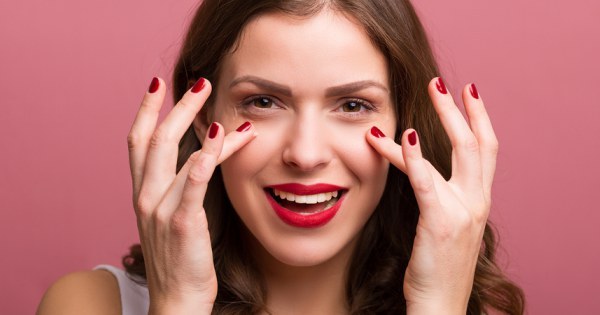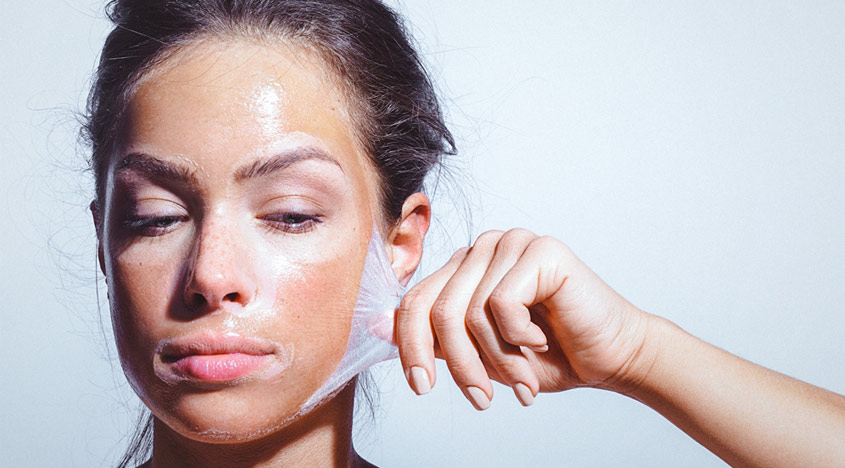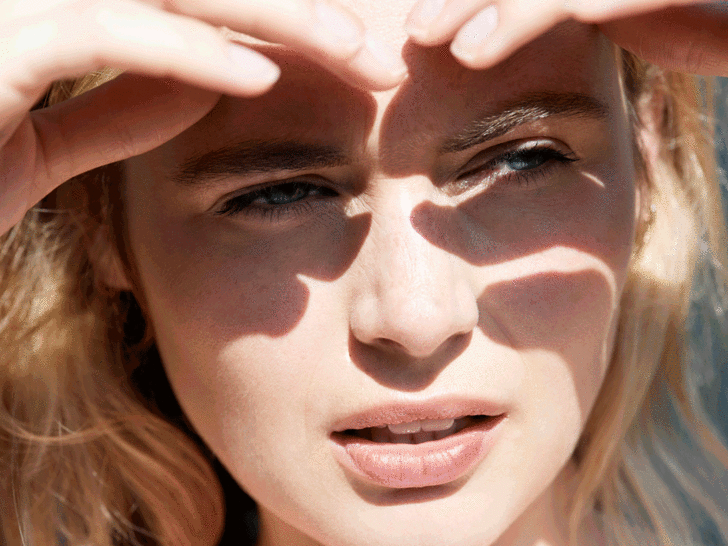
She’s not a vampire (she might use a cream made of blood, though). She’s not a member of the Twilight family. She hasn’t made a deal with the devil or David Blaine. Some people age so well they need to defend their status as human beings (like Pharrell Williams, who recently went “on the record” to confirm that he was not a long-lost Cullen). While good behavior (staying out of the sun, foregoing smoking) an effective skin-care routine (cleansing and moisturizing), and doctor procedures all have something to do with it, plain science and genetics also have a hand in how your skin ages. To learn why some people appear to age at a different rate than others, we asked medical experts (who also looked unbelievably youthful) about how genes and ethnic makeup affect the way we age. And what can we do to improve our chances of staying naturally baby-faced for longer.

 Aging is more than just wrinkles
Aging is more than just wrinkles
Most of us hear the word aging and think one thing: wrinkles. Or at most, two things: wrinkles and sagging skin. But according to dermatologists, the majority of people experience a combination of wrinkles, hyperpigmentation, loss of elasticity, and loss of volume (meaning the opposite of flatness), as they age. How fun. On top of that, the texture and color of your skin affect the likelihood of it exhibiting these characteristics. With the march of time, elastin and collagen become looser (collagen even eventually stops being produced over time). Fat cells also start to shrink.

“Once you are able to wrap your mind around the fact that aging is a multi-factorial process that involves several different areas of deterioration, the better positioned you will be in combating the effects of age successfully” says Dr Low Chai Ling, founder of aesthetic clinic, SW1.
That is perhaps why aesthetic doctors will usually come up with a treatment plan that involve several different modalities to address the handful of issues for best results. “Ultherapy can address skin sagging but for areas of movement-induced wrinkles, botulinum toxin injections such as BOTOX is still needed” she says. “Women who experience sunkenness of the face may also benefit from a filler hydrolift, using fillers to replace volume and lift the face” she adds.
So be open to the idea of using combination therapy for your face and you will look naturally youthful rather than ‘overdone’, according to medical experts.
Read More: 5 Reasons Why Beauty Sleep Is Essential to Your Looks & How You Can Fake It
 It’s good to be ‘thick’ skinned
It’s good to be ‘thick’ skinned
Traditionally, if you have thicker skin, the signs of aging are less noticeable. “When the dermis is thicker, cells are more densely packed together and more compact. You don’t see fine lines and wrinkles as much” says Dr Kenneth Lee, an aesthetic doctor who has special interest in skin aging. DNA determines whether you were born with thick skin. But Dr. Lee confirms that genetically, those with more melanin-rich skin (such as Hispanic, Mediterranean, Asian-American, and African-American people) are pre-disposed to have thicker skin, resulting in wrinkles that look less prominent. Ever wonder why wrinkles are more noticeable on your forehead or under the eyes? That’s where skin is thinnest.

As we age, our skin of course gets thinner and aging signs put off by the protection of our youth dissipates. To improve the hydration and hence overall pliancy of our skin, skin replenishing hyaluronic acid skinboosters such as Revitalift can help. As can collagen-stimulating lasers such as SmartX, a carbon dioxide laser that reaches into the deeper layers of the skin.
Read More: 5 Common Skin Mistakes of Youth That You Will Regret
 Don’t fat-shame your skin
Don’t fat-shame your skin
Plump skin actually has positive connotations, attributed to youth. In South Korea, the beauty ideal for skin is something called chok chok — a term that means “plump and moist.” Your genetics can determine whether you have higher fat content in deeper areas of the skin. While you may bemoan that composition in other parts of your body, for your face, it means that you can “maintain that plump, hydrated look for longer.” African-American and Asian people tend to have higher fat content in their skin. So they naturally age at a slower rate, but even among one race, there can be huge variations.

All is not lost if you lose the youthful plumpness of your face. Fat transfer now comes in two forms—a micro fat version where it reproduces the baby soft fullness of the face or nanofat—where the fat particles are even finer and is said to benefit the complexion, imparting it a youthful glow.
Read More: 5 Facial Alternatives That Give You Gorgeous Skin with No Downtime
 Dark triumphs fair
Dark triumphs fair
Melanin, the pigment that gives your skin and hair its color, affects aging. The higher you fall on the Fitzpatrick scale, which categorizes skin tones according to numbers 1 (for very fair and prone to sunburns) to 6 (for very dark skin that rarely burns), the more melanin your skin contains. Dr. Lee explains the anti-aging protection of melanin this way: “Melanin confers UV protection.” While it doesn’t mean that people with melanin-rich skin don’t need to wear sunscreen, “just having that melanin is like having SPF 13 or higher all the time.”
If you’ve ever read a beauty article, you know that the sun and its UV rays are bad for the skin. “UV radiation is the number-one extrinsic ager — meaning an aging factor that’s not within your DNA. It causes molecular damage to your DNA,” says Dr. Lee. Your skin is made up of collagen and elastin — materials that make up the structure that holds up your skin. The sun and its UV rays break down collagen and elastin, which leads to sagging and other signs of aging.

Melanin-rich skin has the benefit of additional built-in UV radiation, but also tends to show aging in a form other than wrinkles. Melanin confers pigment that can also translate to hyperpigmentation and sun spots, which is why this is a primary aging concern for those on the darker end on the Fitzpatrick scale. “In melanin-rich skin such as in Hispanic, Asian, and black skin, you notice hyperpigmentation and sun spots more so than in Caucasian skin, because of melanin,” says Dr. Lee. Asian may not ‘raisin’ with age, but we do get our fair share of complexion woes— melasma, age spots to name a few. So Asians should focus on effective sun protection and use products that can discourage new pigment formation effectively. De-pigmentation lasers such as Pico Pigment lasers also do their part in helping the darker skin types clear unwanted patches of pigmentation effectively and safely.
Read More: How to Get Brighter, Clearer Skin in 20 Minutes or Less
If you don’t fall on the right side of all the categories listed above, don’t fret. Between nature and nurture, studies have shown that nurture play an increasingly important role as we age.
Nutrition, skin care, exercise, all still play a huge part — these are all things that help keep your skin and body from showing signs of molecular damage and being reparative to your DNA. You may have been born one way, but when it comes to aging, nature doesn’t trump nurture. Interventions done early enough can waylay the ill-effects of your skin’s natural fate, giving you a future that doesn’t necessarily have to follow the paths of your ancestors.
Read More: 5 Things You Should Do When Acne Won’t Clear

